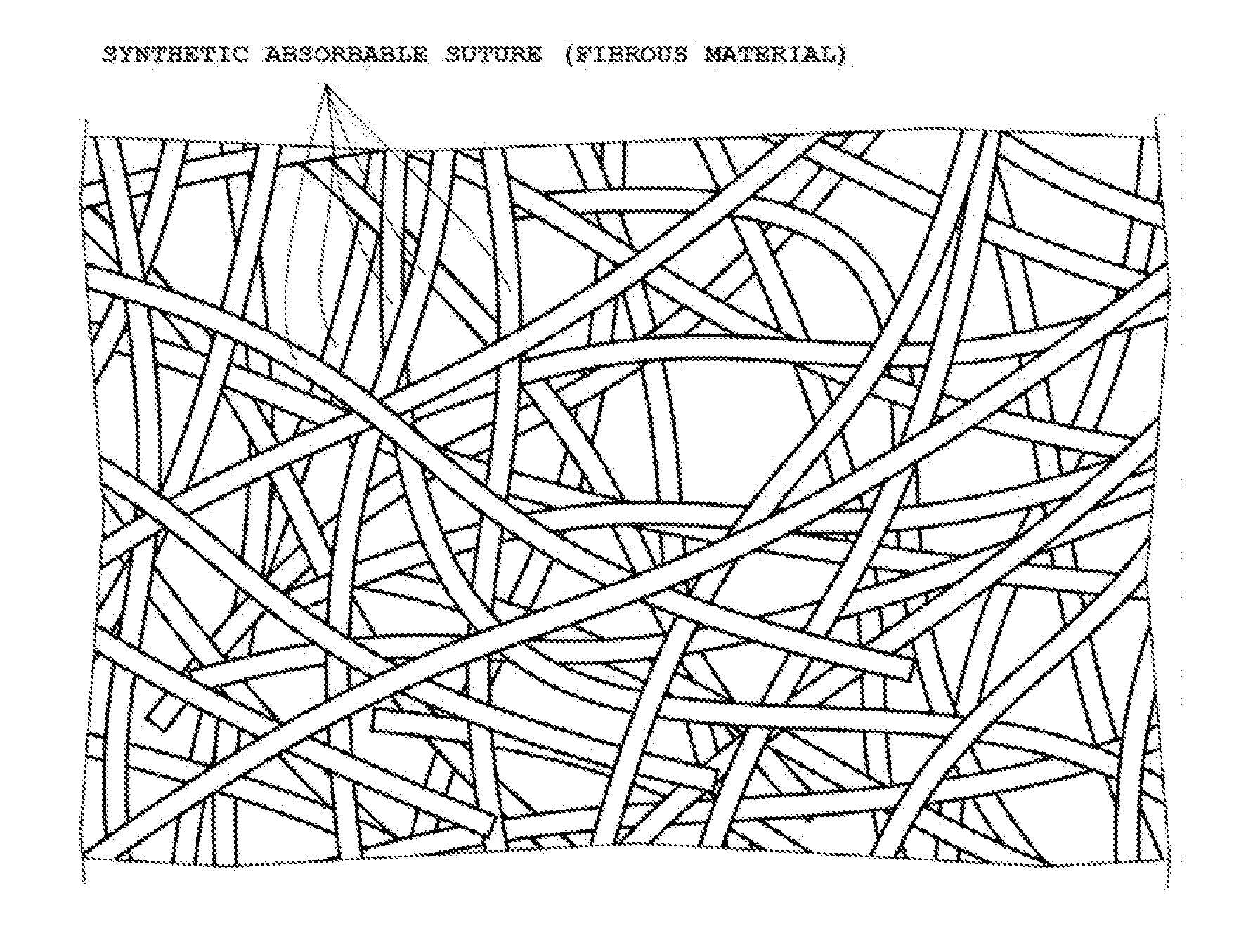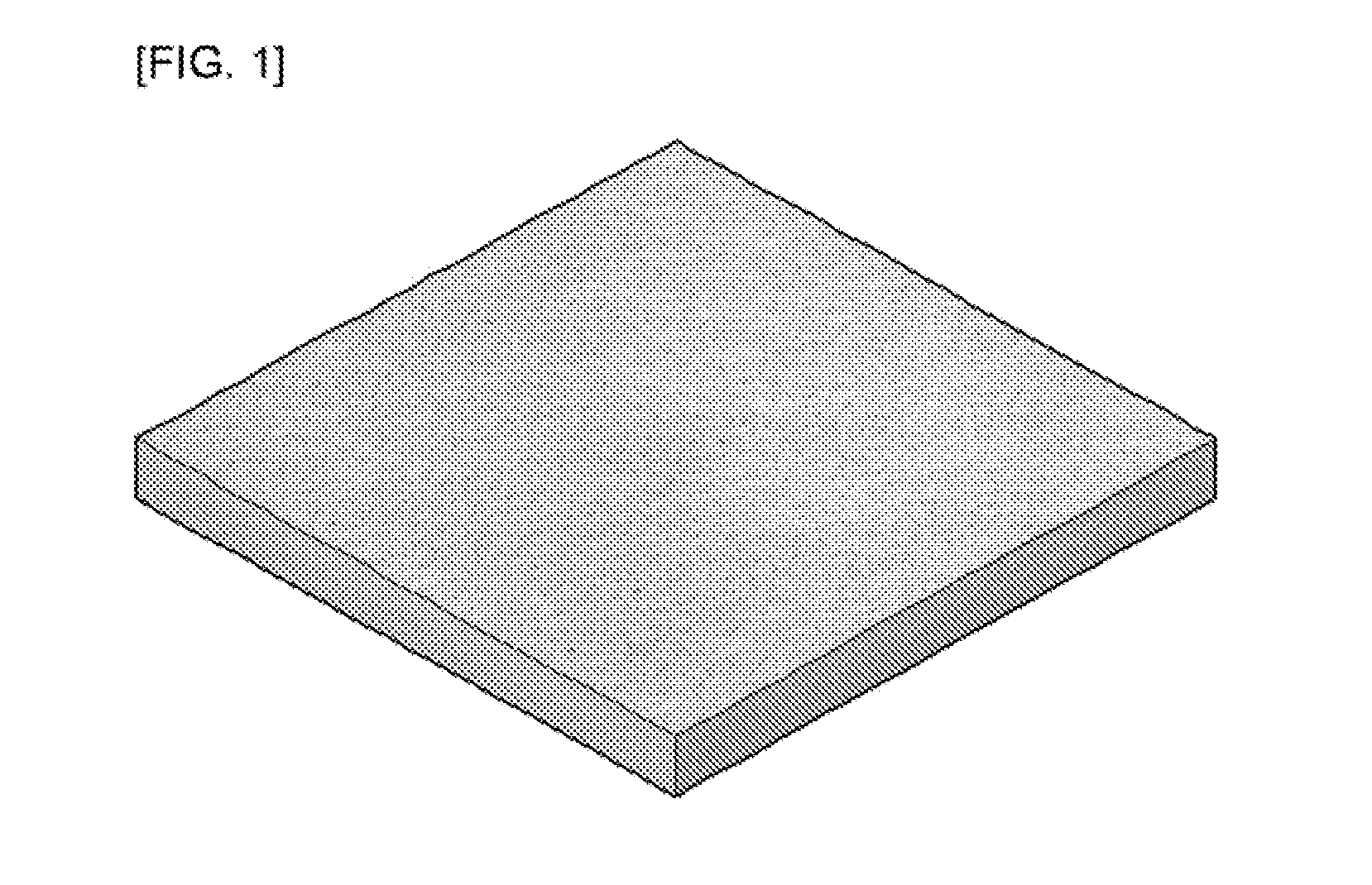Spacer For Ionized Radiation Therapy
a radiation therapy and spacer technology, applied in the field of spacers for ionizing radiation therapy, can solve the problems of not being completely regulated, affecting the treatment effect, and so as to achieve the effect of avoiding the exposure of normal tissue, avoiding the effect of affecting the treatment effect, and being easy to dispos
- Summary
- Abstract
- Description
- Claims
- Application Information
AI Technical Summary
Benefits of technology
Problems solved by technology
Method used
Image
Examples
example 1
Spacer for Ionizing Radiation Therapy
[0042]FIG. 1 is a perspective view illustrating the spacer for ionizing radiation therapy according to the present invention. In Example 1, a synthetic absorbable suture Ope-Polyx™ (manufactured by Alfresa Pharma Corporation) was used as the fibrous material formed of a biocompatible synthetic polymeric material. The suture is a multi-filament thread produced by twisting together three fiber pieces drawn from a pellet. The thread is not subjected to any crimp processing and is a straight-type thread. The thread is formed of polyglycolic acid, and hence, when left in a living body, is hydrolyzed to have its tensile strength reduced by half in about 3 weeks, and to be absorbed in the living body in about 3 months with no thread form left. Thus, the thread has bioabsorbability-type biocompatibility. In order to produce a spacer for ionizing radiation therapy of Example 1, a large number of threads each having a length of about 50 mm and cut out from...
experimental example 1
Test on Water-Containing Property of Spacer for Ionizing Radiation Therapy
[0044]In order to measure the water-containing property of each of the nonwoven fabric spacer produced in Example 1 and the GORE-TEX™ spacer of Comparative Example 1, a test was performed by the following procedure.
Test Method:
[0045]1. Example 1 and Comparative Example 1 were each cut into a rectangular shape measuring 5 cm square to serve as a test sample, which was left to stand still on a petri dish.[0046]2. Water was gradually dropped with a dropper on an edge of the test sample, and the amount of water dropped when water exuded from the bottom of the petri dish was quantified, which was defined as a water retention amount.
[0047]Table 1 shows the results.
TABLE 1ComparativeItemExample 1Example 1PhysicalThickness (mm)210propertiesWeight per unit area (g / cm2)0.13680.0716of testWeight (g)3.421.79sampleApparent density (g / cm2)0.68400.0716Water retention amount (g)0.2523.61Water retention rate (g / cm2)0.01000.944...
experimental example 2
Radiation Blocking Test on Spacer for Ionizing Radiation Therapy
[0049]1) Measurement of Water Equivalent Thickness of Spacer
[0050]Each of a laminate of two pieces of the spacer of the present invention produced in Example 1 and a laminate of two pieces of the GORE-TEX™ spacer as Comparative Example 1 (thickness: 4 mm) was subjected to CT scanning in the same manner as in general particle beam therapy. Then, a water equivalent thickness determined with a therapy planning apparatus (instrument measurement value) and a water equivalent thickness determined through actual measurement using a particle beam (actual measurement value) were compared to each other. The term “water equivalent thickness” as used herein refers to the shield ability of a shield converted in terms of water thickness (equal to the thickness of an aqueous medium contained in the shield), which serves as an indicator for the radiation stopping power of the shield. Table 2 shows the results. The spacer of the present...
PUM
 Login to View More
Login to View More Abstract
Description
Claims
Application Information
 Login to View More
Login to View More - R&D
- Intellectual Property
- Life Sciences
- Materials
- Tech Scout
- Unparalleled Data Quality
- Higher Quality Content
- 60% Fewer Hallucinations
Browse by: Latest US Patents, China's latest patents, Technical Efficacy Thesaurus, Application Domain, Technology Topic, Popular Technical Reports.
© 2025 PatSnap. All rights reserved.Legal|Privacy policy|Modern Slavery Act Transparency Statement|Sitemap|About US| Contact US: help@patsnap.com



